“People living in Donetsk, Luhansk, Kherson and Zaporizhzhia they are becoming our citizens – forever, ” Put in he said in the Hall of St. George with the chandeliers of the Grand Kremlin Palace, the same place where he declared in March 2014 that the Ukrainian peninsula of Crimea was part of Russia.
The move to annex the territories, which make up nearly 15% of Ukraine, comes at a time when Russia was almost cornered. It should now change the course of the 7-month war.
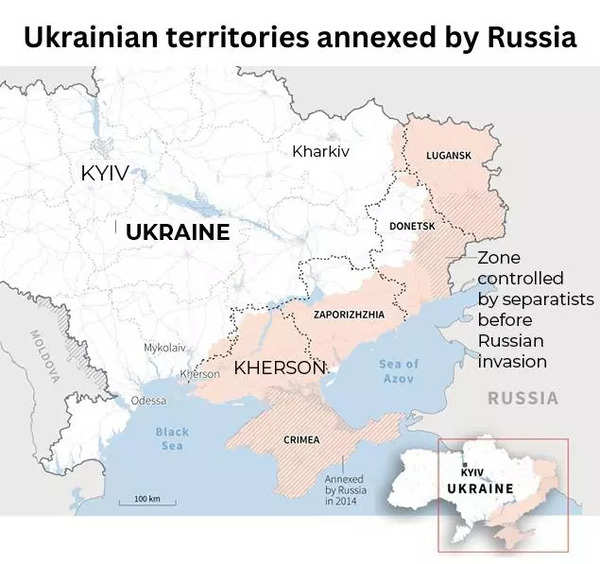
For Putin, it could help legitimize his nuclear threats and offer a sense of victory that had eluded him since the invasion began. But some Ukrainians living in the region have begun to fear the worst.
Here’s why Putin annexed the 4 Ukrainian regions and what it means for the war:
Nuclear threats
The annexation of the 4 regions adds a certain degree of legitimacy to Putin’s nuclear threats, which had previously been denounced by Western experts as a risk.
During the ceremony for the official announcement of the annexation, Putin chillingly swore to protect the newly annexed regions by “all means available”.
While he didn’t launch any new nuclear warnings, Putin also claimed that the United States set a precedent when it dropped two atomic bombs on Japan in 1945.
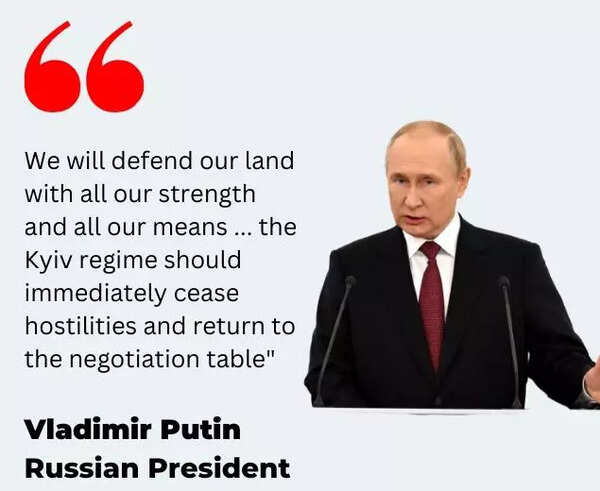
The message was painfully clear: any attack on the newly annexed regions would be interpreted as an attack on Russia. This would give Putin sufficient reason to use any means available in Russia’s vast arsenal, including nuclear weapons. Just like he said.
Even earlier Putin had claimed that his nuclear threat was not a bluff.
His main collaborator, Dmitry Medvedev, said earlier this week that Russia has the right to use nuclear weapons in Ukraine if Kiev threatens Russian statehood.
Experts believe the annexation signals the beginning of a “new and highly dangerous phase” in the war, which could degenerate into the use of nuclear weapons for the first time in 77 years.
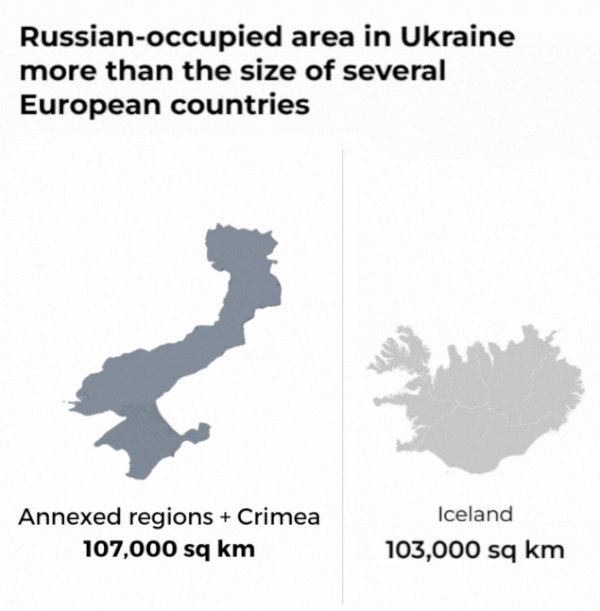
A diversionary move?
Although Putin proudly proclaimed annexed territories on Friday, Russian forces in one of the four regions were on the verge of being encircled by Ukrainian troops.
On Saturday, Ukrainian troops entered the city of Lyman and claimed to have surrounded thousands of Russian soldiers. This just shows how tenuous Russia’s grip on some of the territories it claims is.
In recent weeks, Ukraine has managed to reclaim large areas of its territory and triggered a Russian retreat with the help of advanced weapons supplied by the West.
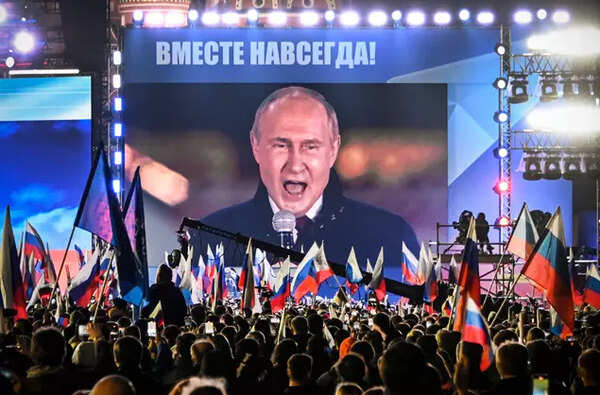
In this context, a lavish Kremlin ceremony and the promise that Moscow would triumph in its “special military operation” help Putin divert attention from the possibility of facing a potential major military overthrow.
Former Kremlin speechwriter turned political analyst Abbas Gallyamov linked Russia’s upheavals in the war with the push for annexation.
“It sounds like an attempt to answer somehow, and it sounds pretty pathetic. Ukrainians are doing something, taking steps in the real material world, while the Kremlin is building a kind of virtual reality, unable to respond in the real world, “she said.
A kind of victory
“The victory will be ours,” President Putin said Friday as thousands of Russians gathered on Moscow’s Red Square to celebrate the annexation.
“Russia not only opens the doors of its home to these people, it also opens its heart. Welcome home!” she said, causing chants of “Russia! Russia!” from the crowd of flag-wavers in the vast square.
Russia’s Friday show and tale was clearly dominated by the theme of victory. This is because victory is exactly what Putin has missed in the past 7 months.
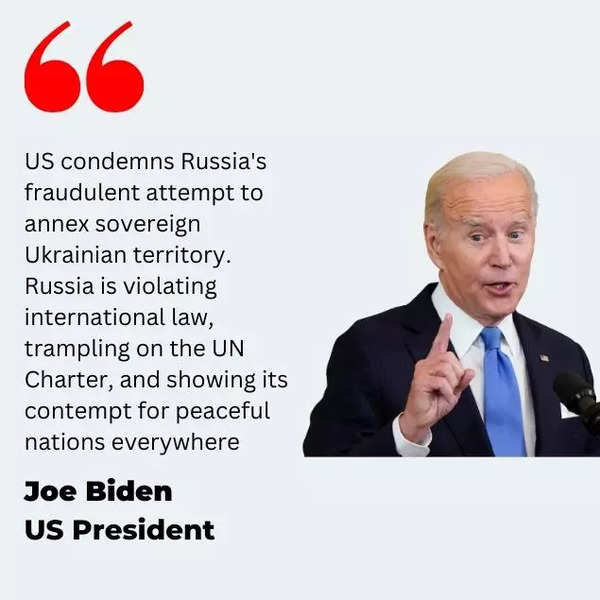
What was supposed to be a quick capture of Kiev has turned into a long battle that has been going on for 7 months with both countries running out of their manpower and resources.
Far from capturing Kiev, Russia faced stiff resistance from Ukrainian troops, backed by a sense of nationalism and a steady supply of Western weapons.
Since Putin had no choice after his February 22 invasion, he had to recalibrate his war goals to focus on the region of eastern Ukraine where the referendums took place last month.
Therefore, the formal annexation of the 4 territories gave Putin a sense of accomplishment that he desperately needed in recent weeks.
If not a complete takeover, Putin would be happy to accept 15% of the country’s territory. But it remains to be seen whether Russia can resist a tough Ukrainian advance.
Putting Ukrainians against Ukrainians
The annexation of Donetsk, Luhansk, Kherson and Zaporizhzhia opened the possibility for Putin to ask for conscription.
According to reports, the Ukrainian authorities believe that Russia will try to mobilize young people in the occupied areas to fight against Ukraine.
This has already happened in parts of eastern Ukraine under Russian control since 2014, most notably in Crimea.
According to the Guardian, Russian soldiers have told dozens of men between the ages of 18 and 35 that there is a ban on letting them go, according to older men who have successfully crossed paths, as well as two NGOs involved. in helping to evacuate local Telegram people and groups.
Previously, Ukrainian president Volodymyr Zelenskii he told the citizens of the occupied territories to hide from mobilization by “any means”.
Russia could also consider a convocation following the scare unleashed by Putin’s mobilization appeal last week.
Over 194,000 Russian citizens have already fled to neighboring Georgia, Kazakhstan and Finland – most often by car, bicycle or on foot – since Putin announced a partial mobilization of reservists.
In Russia, the vast majority of men under 65 are registered as reservists.
(With input from agencies)
